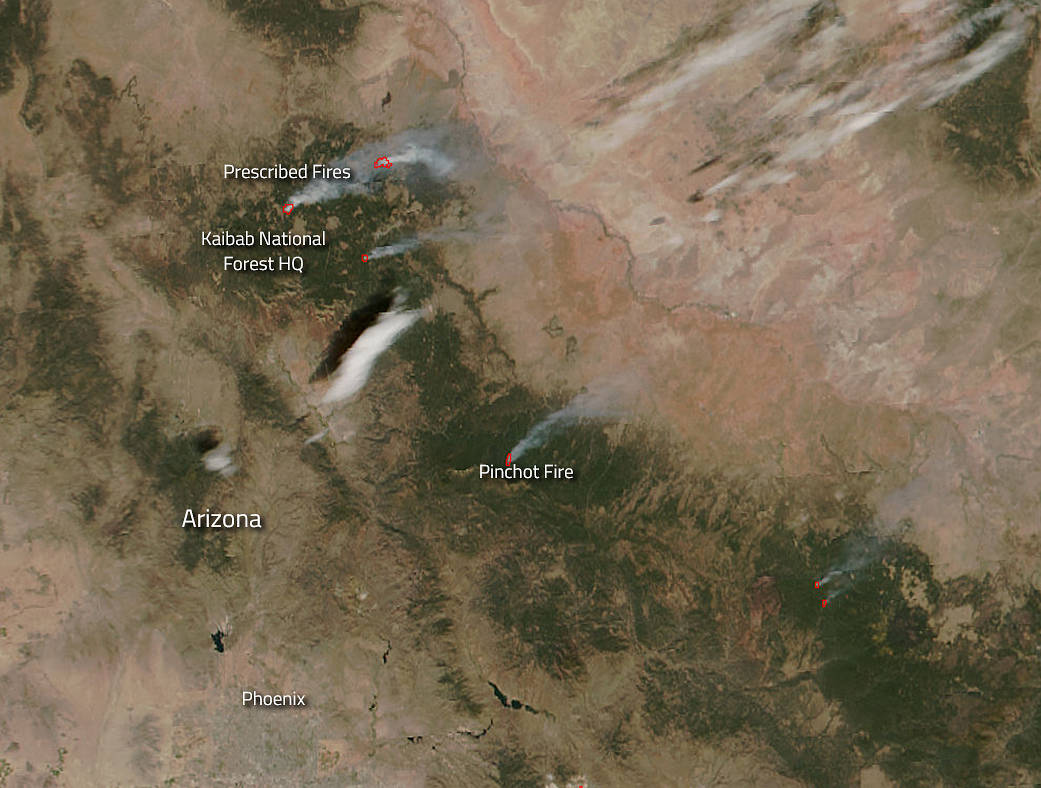Fires are traditionally bad news but in Arizona there’s good news regarding certain fires. The Pinchot Fire began as a lightning strike on August 29, 2016, but Fire Managers with the Coconino National Forest decided to utilize the fire in the Dick Hart Ridge area southeast of Clints Well to benefit the landscape and maintain a healthy ecosystem by allowing fire to fulfill its natural role in the environment. The fires in the Kaibab National Forest area were actually set and controlled by fire managers to do the same kind of “housekeeping.” Fire managers with the Williams Ranger District plan to continue prescribed fire operations, known as the Green Base Prescribed Fire Project over the next week as weather conditions allow. The difference between the two incidents? The Pinchot Fire is not a prescribed burn. This wildfire will be managed where needed and allowed to function as nature intended. This means it does not have a planned end date, but fire managers have carefully determined the perimeter within which the fire may run its natural course.
After many years of fire exclusion, an ecosystem that needs periodic fire becomes unhealthy. Trees are stressed by overcrowding; fire-dependent species disappear; and flammable fuels build up and become hazardous. The right fire at the right place at the right time:
- Reduces hazardous fuels, protecting human communities from extreme fires;
- Minimizes the spread of pest insects and disease;
- Removes unwanted species that threaten species native to an ecosystem;
- Provides forage for game;
- Improves habitat for threatened and endangered species;
- Recycles nutrients back to the soil; and
- Promotes the growth of trees, wildflowers, and other plants;
NASA’s Suomi NPP satellite collected this natural-color image using the VIIRS (Visible Infrared Imaging Radiometer Suite) instrument on October 18, 2016. Actively burning areas, detected by MODIS’s thermal bands, are outlined in red. NASA image courtesy Jeff Schmaltz LANCE/EOSDIS MODIS Rapid Response Team, GSFC. Caption by Lynn Jenner
Suomi NPP is managed by NASA and NOAA.


























